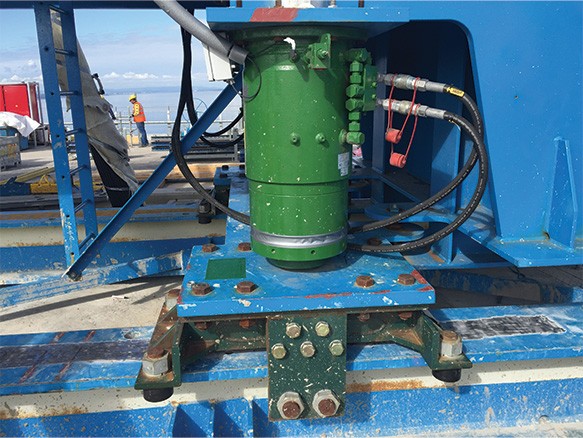
300 Ton Rollers used during construction of brand new largest cable-stayed bridge in the world.

The Forth Road Bridge opened in 1964 in Edinburgh, Scotland and was considered a vital main cross The Forth Road Bridge opened in 1964 in Edinburgh, Scotland and was considered a vital main crossing of the Fifth of Forth, having traffic of about 70,000 vehicles per day. Corrosion on the cables had caused the bridge to have a loss of strength between 8-10%, prompting the need for a solution. To safeguard this bridge from future deterioration, the decision was made to build a new cable-stayed bridge to the west of the current bridge.
Each Hilman Roller was rated at 300 metric ton capacity and fitted with lateral guidance (maintained alignment during advancement of the Erection Travellers) and an uplift prevention system (utilized to shift the track sections to their next position). The Hilman Rollers were positioned in the traditional, chain-down orientation on inverted screw collar jacks that transferred the weight of the traveller from the supports used during deck lifting. Additionally, Hilman was responsible for supplying custom fabric pads to support the rear end of the Erection Travellers, to avoid any damage on the newly erected deck sections.
American Bridge International was responsible for finalizing the design details and procuring Hilman Rollers for the Forth Crossing Bridge Constructors (FCBC) Joint Venture. Amongst other elements of the main bridge construction and temporary works design, the Erection Traveller design and concept for utilizing the Hilman Rollers was generated by Dorman Long Technologies.